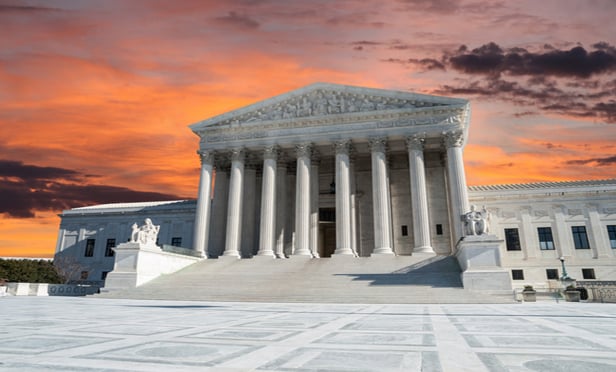Columns & Departments

Development
Environmental Group Had Standing to Challenge Permit Town Could Not Deny Special Permit On Ground That Unit Owner Had Failed to Show Reasonable Need for Proposed Facility
Features

A Tutorial On Contract Liability for Real Estate Purchasers: 'Huguenot LLC v. Megalith Capital Group Fund I, L.P.'
In ultimately rejecting the plaintiff's claim that the apartment buyers could be responsible for the condominium developer's breach of a contract recorded as part of the condominium's declaration, the court illustrated some important points about how contracts can run with the land, or otherwise impose liability on real estate buyers.
Features

Landlord Can't Waive Illegal Use of Premises By Accepting Rent
The court reasoned that the landlord's affidavit, together with the exhibits established prima facie proof that the tenant had been illegally using the premises and had acquiesced thereto.
Features

PA Court Rules that Landlord Can Only Recover Damages for Unpaid Rent Through Date of Repossession
A recent Pennsylvania Superior Court opinion held that a commercial tenant was evicted from the leased premises rather than abandoning it and that, accordingly, the landlord could only recover damages for unpaid rent through the date when the landlord recovered possession of the leased premises, denying the landlord's claim for additional rent for the remainder of the lease term.
Features

Don't Sleep On Prohibitions on the Assignability of Leases
Attorneys advising commercial tenants on commercial lease documents should not sleep on prohibitions or other limitations on their client's rights to assign or transfer their interests in the leasehold estate. Assignment and transfer provisions are just as important as the base rent or any default clauses, especially in the era where tenants are searching for increased flexibility to maneuver in the hybrid working environment where the future of in-person use of real estate remains unclear.
Features

CoStar Wins Injunction for Breach-of-Contract Damages In CRE Database Access Lawsuit
Latham & Watkins helped the largest U.S. commercial real estate research company prevail in a breach-of-contract dispute in District of Columbia federal court.
Features

LJN Quarterly Update: 2024 Q3
The LJN Quarterly Update highlights some of the articles from the nine LJN Newsletters titles over the quarter. Articles include in-depth analysis and insights from lawyers and other practice area experts.
Features

Yachts, Jets, Horses & Hooch: Specialized Commercial Leasing Models
Defining commercial real estate asset class is essentially a property explaining how it identifies — not necessarily what its original intention was or what others think it ought to be. This article discusses, from a general issue-spot and contextual analysis perspective, how lawyers ought to think about specialized leasing formats and the regulatory backdrops that may inform what the documentation needs to contain for compliance purposes.
Features

Be Careful What You Stip For: 'Liggett v. Lewitt Realty LLC'
The ruling from New York's highest state court, although straightforward on its face, has important implications for both long-existing settlement agreements and when considering drafting future agreements settling disputes in the context of the Rent Stabilization Law.
Features

U.S. Supreme Court Ruling Empowers Developers and Property Owners to Challenge Excessive or Unjustified Impact Fees
The recent U.S. Supreme Court ruling in Sheetz v. County of El Dorado will cause many local governments to revisit the defensibility of their impact fee regimes.
Need Help?
- Prefer an IP authenticated environment? Request a transition or call 800-756-8993.
- Need other assistance? email Customer Service or call 1-877-256-2472.
MOST POPULAR STORIES
- The DOJ's Corporate Enforcement Policy: One Year LaterThe DOJ's Criminal Division issued three declinations since the issuance of the revised CEP a year ago. Review of these cases gives insight into DOJ's implementation of the new policy in practice.Read More ›
- How to TOOT Your Own Horn: Exceptional Self EvaluationsIt's that time again. As the year comes to a close many firms are beginning the associate review process. Even if your firm does not have a formal review process I recommend that you write a self-evaluation that outlines your achievements and specifies your goals for the coming year.Read More ›
- The FTC Gets Into the College Athlete NIL GameAs national champions are crowned in men's and women's basketball, hundreds of thousands of college athletes are entering the influencer marketplace for the first time and now find themselves attractive candidates in the fast growing influencer marketing arena. With influencer marketing potentially providing a 5x return on investment, many brands are eager to get into the industry, but it doesn't come without risks as the FTC Commissioner is taking a closer look at the use of influencers for marketing.Read More ›
- Use of Deferred Prosecution Agreements In White Collar InvestigationsThis article discusses the practical and policy reasons for the use of DPAs and NPAs in white-collar criminal investigations, and considers the NDAA's new reporting provision and its relationship with other efforts to enhance transparency in DOJ decision-making.Read More ›
- The DOJ's New Parameters for Evaluating Corporate Compliance ProgramsThe parameters set forth in the DOJ's memorandum have implications not only for the government's evaluation of compliance programs in the context of criminal charging decisions, but also for how defense counsel structure their conference-room advocacy seeking declinations or lesser sanctions in both criminal and civil investigations.Read More ›
